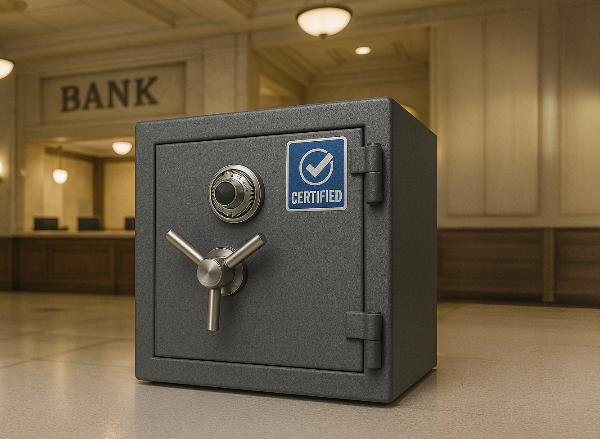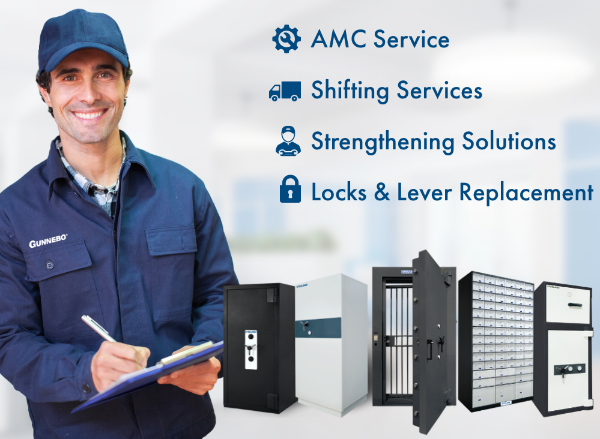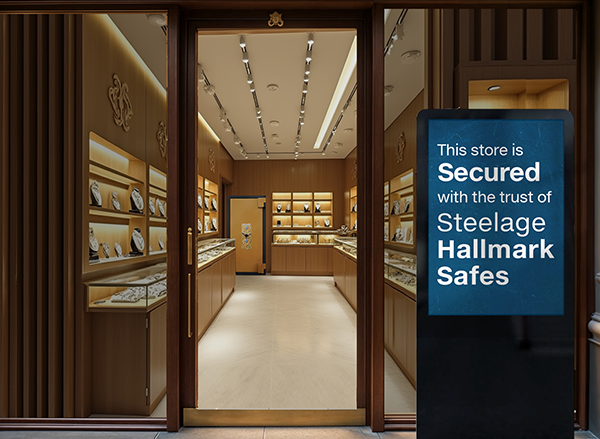
STEELAGE BLOGS
Fri 9th May 2025
Rethinking Physical Safe Storage Solutions: A Practical Guide for Banks

In many banks across the country, physical storage systems have remained unchanged for decades. From rusting lockers to vaults with mechanical key locks, these outdated solutions no longer meet the security expectations of today’s banking environment. As threats evolve, so must the infrastructure that protects a bank’s most critical assets—cash, documents, customer valuables, and internal data.
It’s time for banks to reassess their physical storage strategy and move toward systems that deliver security, control, and long-term reliability.
The Problem with Outdated Storage
Many traditional safes and lockers rely on manual locks, single-point access, and basic steel construction. These systems often lack audit trails, making it impossible to know who accessed them and when. In case of a break-in or internal misuse, this absence of traceability puts the bank at risk—legally and reputationally.
Furthermore, older lockers and vaults were not designed to handle the sophisticated threats we face today, such as coordinated physical attacks or insider fraud. In some branches, locker rooms still use standard cupboards with padlocks—offering almost no resistance against burglary.
Without upgrading, banks may face not just operational inefficiency, but also potential breaches that could have been avoided.
What a Modern Storage Solution Looks Like
Upgrading to safe deposit lockers, modular vault solutions, and high security locks is no longer a luxury—it’s a necessity. These modern systems bring more than just tougher steel. They incorporate design thinking, technology integration, and risk management capabilities that align with the needs of today’s banking operations.
Here’s what modern storage systems offer:
1. Controlled Access through Electronic Locking Solutions
Unlike manual keys, electronic locking systems offer precise control over who can access what, and when. These locks can be configured to limit access to specific times of the day, or to certain staff only. This eliminates unauthorized entry and adds a digital record of every access attempt.
2. Multi-Factor Authentication for Added Security
Modern safes and vaults now support multi-factor authentication (MFA). A locker may require a combination of access card, PIN, and biometric verification—such as a fingerprint or retina scan—before granting access. This drastically reduces the risk of unauthorized entry, even if one factor (like a PIN) is compromised.
3. Duress Alarm Mechanisms for Crisis Situations
A critical feature for any bank dealing with high-value storage is the duress alarm mechanism. If a staff member is forced to open a locker or vault under threat, they can discreetly trigger an alert through a predefined "duress code" or signal. This enables silent alarms to notify security teams or law enforcement, minimizing risk to human life while initiating a secure response.
4. Audit Trails and Remote Monitoring
Today’s digital systems allow for remote tracking and real-time monitoring of safe access. Any attempt to tamper with a locker or vault triggers alerts. Every transaction and opening is logged—making it easier to detect anomalies, conduct audits, and improve accountability among staff.
5. Scalability with Modular Vault Solutions
Old-style concrete vaults are rigid and expensive to modify. In contrast, modular vault solutions are designed to adapt to the bank’s needs. These modular systems are pre-fabricated, easy to expand, and comply with RBI and BIS guidelines. For banks planning to grow or relocate, modular vaults reduce construction timelines and costs significantly.
Addressing Operational Efficiency
Upgrading isn’t just about tighter security—it also enhances day-to-day operations. Staff can spend less time manually managing lockers and more time serving customers. Electronic locking systems can automate locker access logs, freeing up resources from paperwork and reducing human error.
Most importantly, modern solutions reduce the dependency on single-point authority. A dual-control system ensures no individual has unchecked access, which is crucial for compliance and risk mitigation.
Implementation: Step-by-Step, Not All-at-Once
We understand that banks often operate with budget constraints. Upgrading doesn’t have to happen overnight. Start by identifying the most vulnerable access points in your current storage system—outdated safe deposit lockers, obsolete vault doors, or single-key lock safes.
Next, prioritize investments based on risk exposure. For example, replacing legacy lockers in high-traffic branches with electronic access control units can significantly improve both security and customer confidence.
Look for solutions that offer long-term support, BIS certification, and compatibility with your bank’s growth plans.
Physical security is not just about locks and walls. It’s about building trust—with your customers, your auditors, and your internal team. For banks, rethinking storage isn’t just about catching up—it’s about staying ahead of evolving threats, while delivering reliability and peace of mind.
By adopting modern safe deposit lockers, modular vault solutions, and high security electronic locking systems with access control, multi-factor authentication, and duress alert mechanisms, your bank can build a strong foundation for the future.


